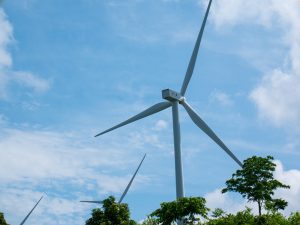In the weeks leading up to this year’s G-20 summit in Bali, Indonesia was signaling its readiness to pivot away from coal if the international community was willing to step up with financing and other forms of support. At the summit, President Joko Widodo then unveiled the Just Energy Transition Partnership, a $20 billion program expected to speed up the transition to clean energy in Indonesia. The program is being financed and led by the United States, Japan, and various European countries.
As outlined in a White House statement the program is intended to “mobilize an initial $20 billion in public and private financing over a three-to-five-year period, using a mix of grants, concessional loans, market-rate loans, guarantees, and private investments.” $10 billion will come from “public sector pledges” and the program involves “a commitment to work to mobilize and facilitate $10 billion in private investment.” The funds will be used to retire coal power plants early and invest in renewable energy projects, to hit peak emissions in 2030 and reach net zero by 2050.
$20 billion is a significant sum, and a good starting point. The announcement lays out some headline numbers and establishes basic goals and a timeline. It shows that developed countries are willing to step up and help accelerate Indonesia’s clean energy transition. But many issues still need to be worked out before this is translated from a splashy announcement into concrete policy outcomes. One of the key unknowns is how the financing and investment will be structured. Will it be primarily state-led or market-led, and how will the risk be distributed between the public and private sectors?
The statement suggests it will be about a 50/50 split between private investment and public sector pledges, but the wording on the private sector commitment is vague. The exact balance is something they are obviously still working out. This is quite important because the state and market are often governed by different logics and incentive structures. The Indonesian state may feel the time is right to pivot toward clean energy, but if private companies don’t find the scheme sufficiently attractive or profitable, they might simply not show up. This has been a problem for Indonesia in the past.
Private investment in renewable energy has struggled in recent years due to regulatory confusion and other financial and administrative bottlenecks. High levels of uncertainty can cause investors to demand higher rates of return or government guarantees to compensate for this elevated risk. When managed poorly, this effectively transmits the risk of private investment onto the state.
One could argue that this is an acceptable trade-off, especially in emerging markets. If the state didn’t absorb some of the risk involved, then there might be no private investment at all. On the other hand, if the pendulum swings too far the other way you could end up with the state assuming all of the risks and being saddled with billions in market-rate liabilities owed to the private sector and denominated in foreign currencies. That could be worse than no investment at all.
New legislation on renewable energy is in the works, and it may address some of this uncertainty, particularly concerning procurement and pricing. But it’s not on the books yet, and Indonesia’s energy sector has never been particularly market-oriented so we don’t know how investors will respond. The most likely outcome is a hybridized approach where a mix of market and non-market tools are employed depending on the situation, the actors, and the objective.
The Asian Development Bank, as part of the larger $20 billion package, is developing an Energy Transition Mechanism tailored for Indonesia which will probably offer state-owned electric utility PLN concessional financing to build renewable energy projects. In exchange, PLN will be required to retire some of its coal-fired power plants before schedule. This is not something a private investor would be interested in doing, and little effort has been made to present it as such or appeal to market logic. But it is a realistic way of inducing the early closure of some of PLN’s coal capacity and kick-starting clean energy investment.
If paired with a comprehensive renewable energy law containing an effective mix of incentives, a transparent and consistent design and strong political support, this could go a long way toward accelerating the uptake of renewables in Indonesia, with the private sector playing a significant role. This is a big if, because of the barriers involved. But dialing in a workable balance between public and private investment, including making sure the risk allocated to the state is not so lopsided as to undermine the whole project, would mean there’s a good chance this $20 billion fund will be more than just good PR.

































